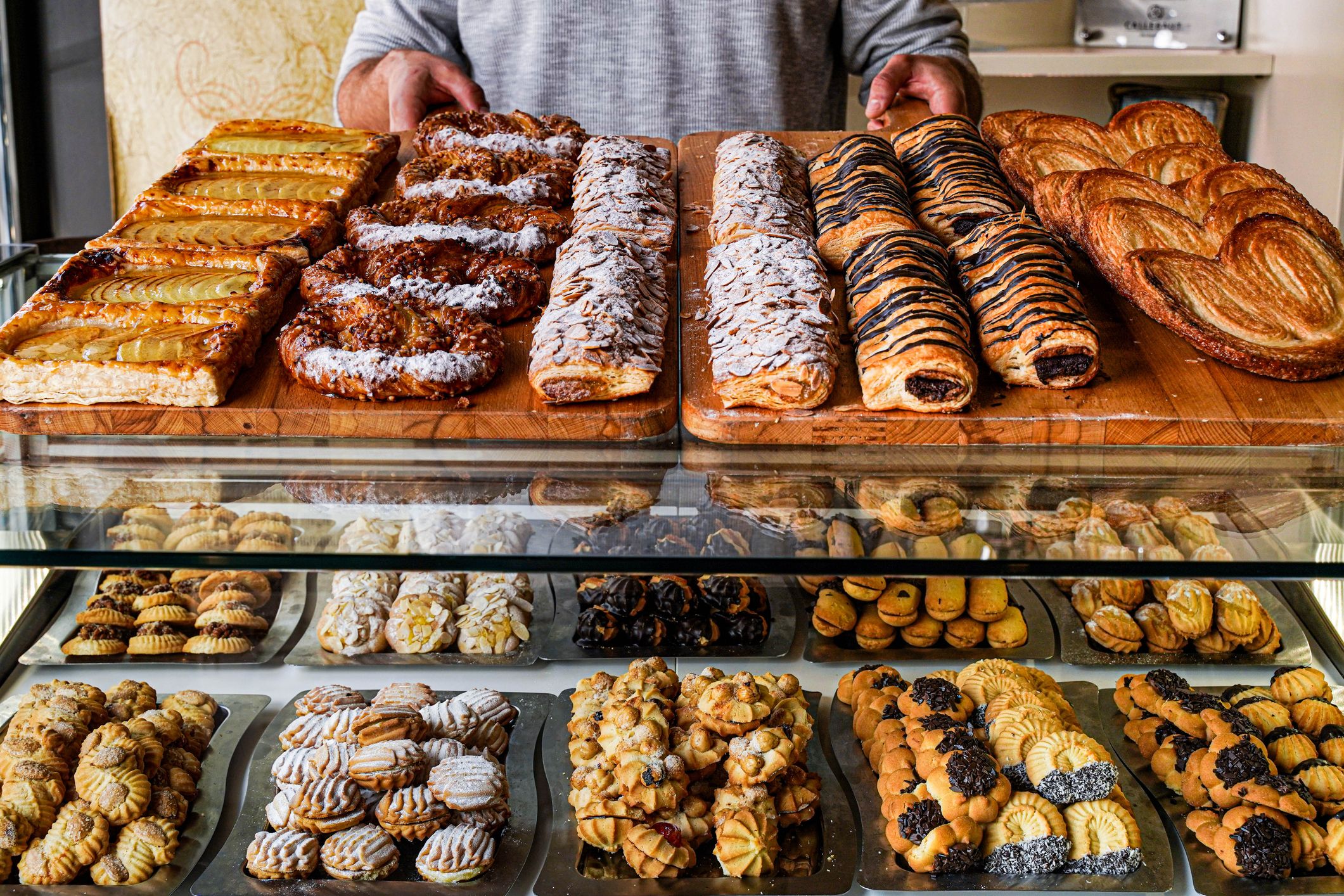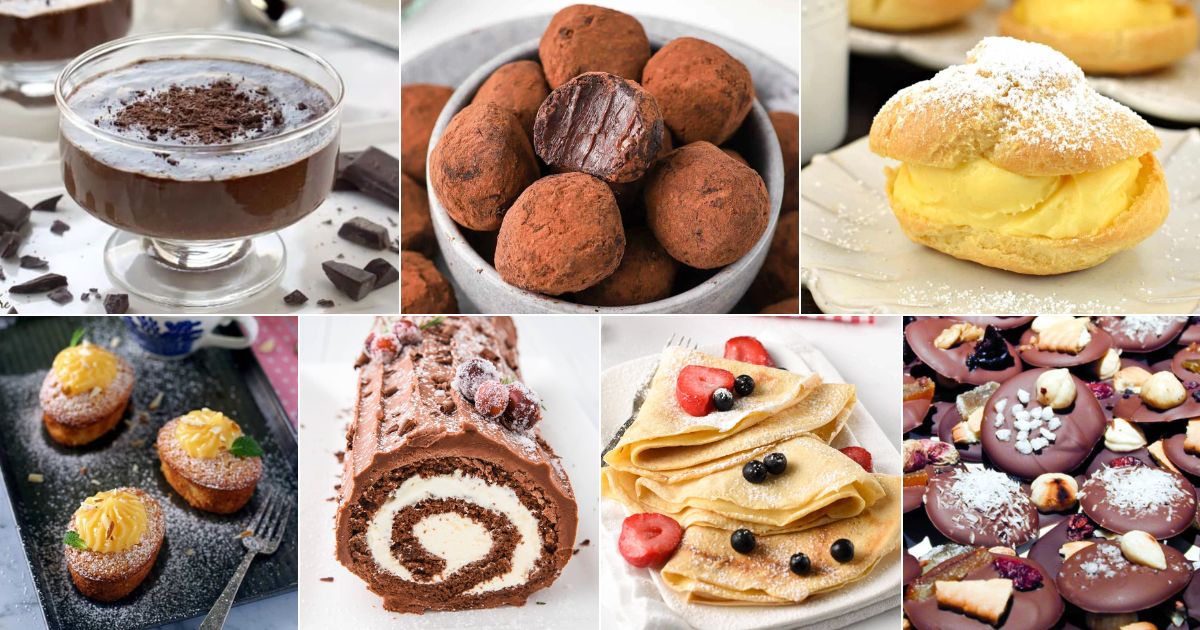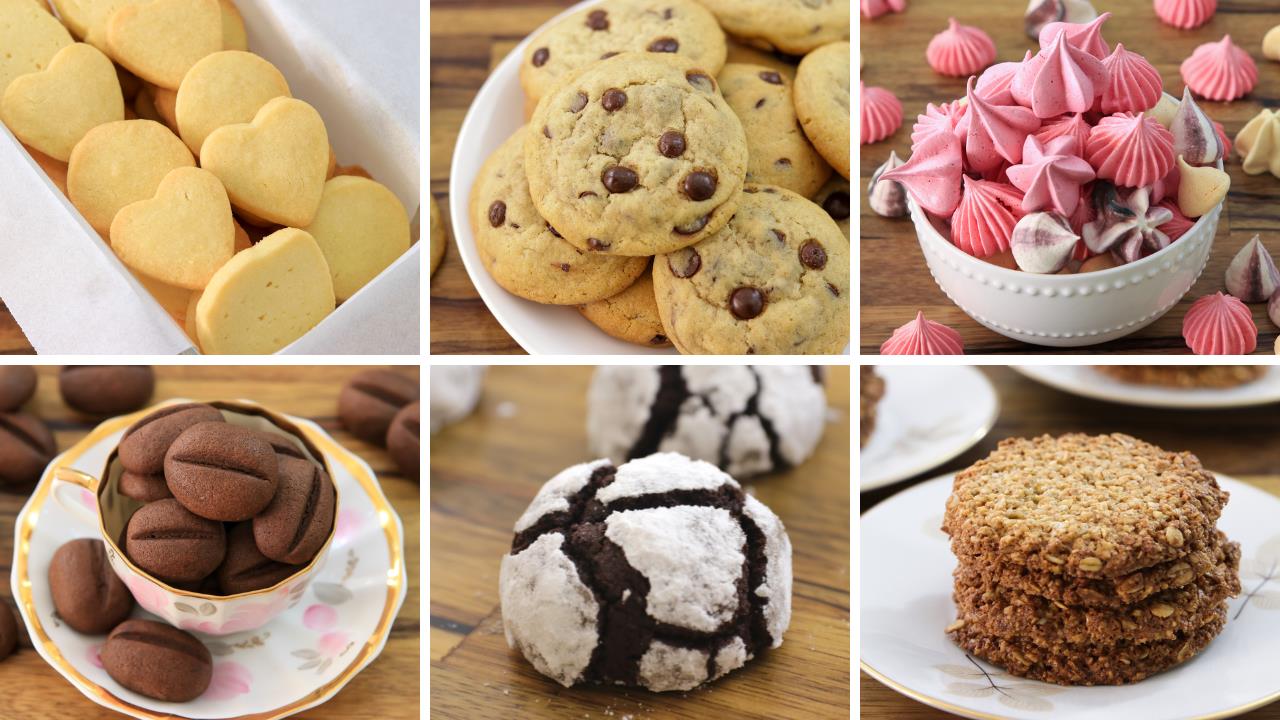




Pastry

Pastry, stiff dough made from flour, salt, a relatively high proportion of fat, and a small proportion of liquid. It may also contain sugar or flavourings. Most pastry is leavened only by the action of steam, but Danish pastry is raised with yeast. Pastry is rolled or patted out into thin sheets to line pie or tart pans and to enclose fillings. Poultry, tenderloin of beef and other cuts of meat, and pâtés are sometimes prepared en croûte, wrapped in a pastry crust. Thicker sheets may be formed into cases, pinwheels, crescents (as done to make croissants), or braids, with or without fillings and glazes or icings.
Tapioca pastry filled with cheese. This type of pastry is made from tapioca flour.
Variations in technique and ingredients yield pastries of varying texture. For a flaky pastry, low-gluten flour is quickly blended with butter, lard, or vegetable shortening so that the fat is broken into bits. A minimum of liquid is used, and the pastry is handled as little as possible. The extreme of flaky pastry is pâte feuilletée, which is formed by folding and refolding a butter-filled pastry to form hundreds of layers of flour and butter that rise in the oven to 12 times the height of the uncooked pastry.
A yeast dough is layered with butter in a similar manner to produce wienbrod, or Danish pastry. A short pastry is one in which the ingredients are well amalgamated so that the baked pastry is tender and fine-textured, tending to crumble rather than flake. In pastries requiring tensile strength, high-gluten flour is preferred, with eggs and a higher proportion of liquid adding to the malleability of the dough. Phyllo and strudel pastries are of this type, rolled or stretched out to paper thinness.
Types of Pastry
Making the right pastry for dishes is as important as the filling itself. Although most recipes include the name of pastry that is recommended for the dish, it helps to have an idea of which pastry suits what and how to make it.
Shortcrust Pastry
This is probably the most versatile type of pastry as it can be used for savoury and sweet pies, tarts and flans. There are several different ways of making shortcrust pastry. (See ‘How to Make Perfect Shortcrust Pastry.’)
Puff Pastry
This is one of the ‘flaked pastries’ characterised by fat and air being trapped between the layers of the pastry dough to give a flimsy, light and crisp finish.
Regarded as the ultimate professional pastry, this type is time-consuming but worth making. It is used for savoury pie crusts and as wrapping for meat and poultry, as well as vol-au-vents, cream horns and mille feuilles (small iced cakes that are filled with jam and cream.)
Flaky Pastry
Used as a crust for savoury pies, sausage rolls, Eccles cakes and jam puffs, flaky pastry is best made in cool conditions and must be chilled during and after making, to prevent the fat content from melting out under cooking conditions.
Rough Puff Pastry
This type is a cross between puff and flaky pastry. It is also good for sausage rolls, savoury pie crusts and tarts and has the advantage of being easier to make than puff pastry, but is as light as flaky pastry.
All three of these flaked pastries need similar care.
Handle as little and as lightly as possible
Fat and dough content should be of the same consistency and temperature
Roll pastry evenly without stretching it or forcing out air
Brush with beaten egg glaze before baking
